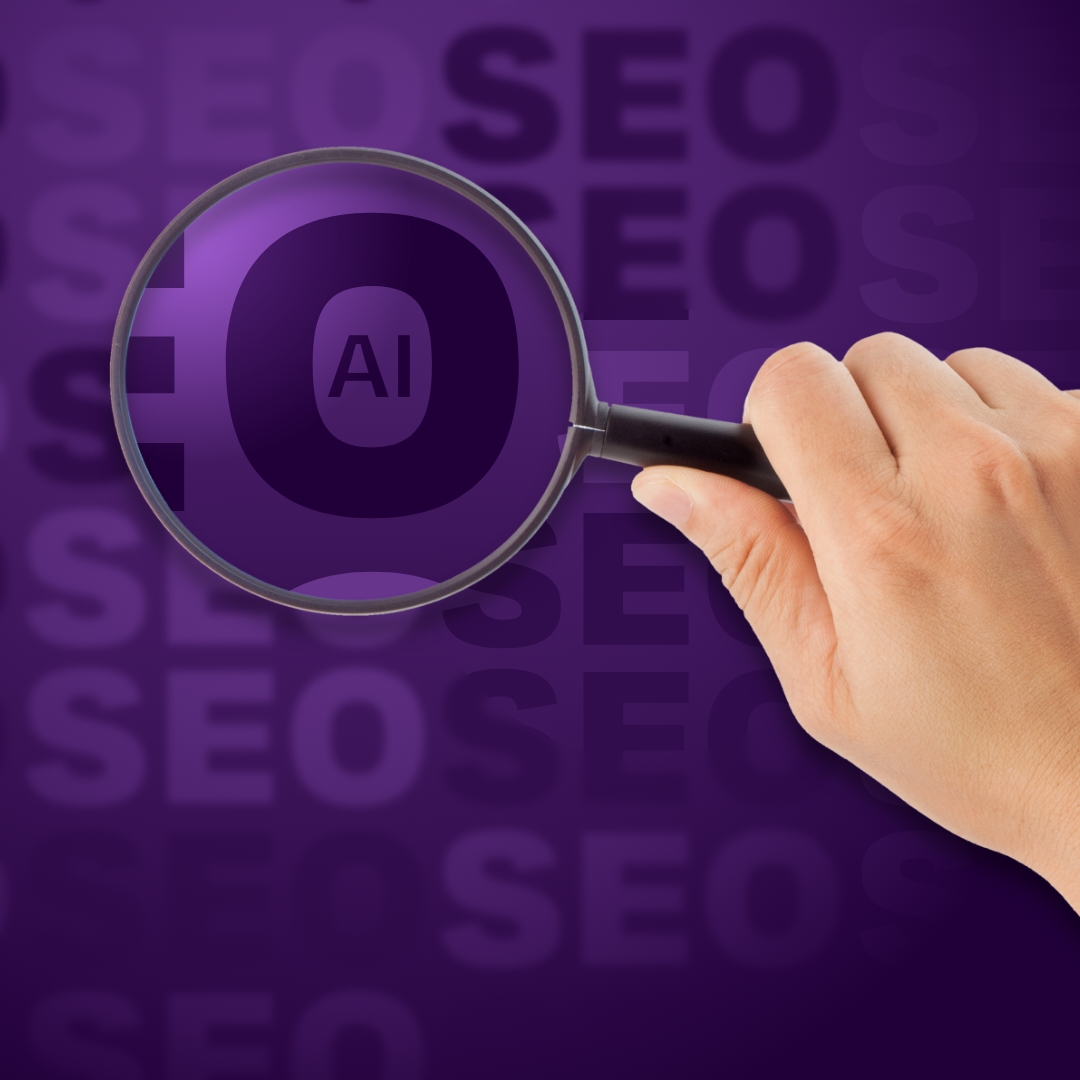Mahmoud is our AI Engineer. He works behind the scenes, creating and integrating AI solutions that help improve the performance of our clients’ websites and digital products.
His day-to-day responsibilities involve exploring new AI technologies, building intelligent tools and collaborating with the team to bring AI-powered ideas to life.
What drew you to working in AI and machine learning?
I can understand why people would want to study AI nowadays, as it’s incredibly popular; however, five years ago, it wasn’t on most people’s radar. It wasn’t on my radar either, so I can’t say I got into AI because I was passionate about it.
My journey simply started when my father suggested to me back then that I should study AI, telling me it would become the future. Since I didn’t have anything else in mind for my career, I followed his advice. Looking back now, I’m incredibly glad I did. AI is not only the future, but it’s actively reshaping our present in ways we’re only beginning to understand.
My father’s prediction about AI becoming the future was very accurate. What he saw coming five years ago is now transforming industries, creating new career paths, and becoming an essential skill across countless fields. I’m grateful for his foresight and for pushing me towards a path that has turned out to be both professionally rewarding and intellectually fulfilling.
Can you tell us about your education in this topic?
I studied Computer Science with Artificial Intelligence at the University of Huddersfield, and during that time, I became genuinely attached to programming and fascinated by how machines learn.
What made my education particularly valuable was that the course wasn’t narrowly focused on just AI. I got to explore cybersecurity, software engineering and computational mathematics. This broad-based approach proved invaluable in ways I didn’t expect.
Understanding cybersecurity helped me grasp AI vulnerabilities and the importance of robust, secure systems. Software engineering taught me to build scalable ML applications that could be deployed in real-world scenarios. Computational mathematics gave me the theoretical foundation to understand algorithms beyond just using pre-built libraries.
Another valuable aspect of the program was the team project modules, which taught us how to manage and work collaboratively, skills that have proven essential in the workplace. AI projects are rarely a solo effort, and learning to communicate complex technical concepts, delegate tasks, and integrate different perspectives has been crucial in my career so far.
What are some important lessons or principles you’ve learned during your education that still guide your work today?
Consistency is key! The one thing that I have come to appreciate over the years is consistency. When I look back at my education and the different projects I’ve worked on, the most significant breakthroughs didn’t come from sudden bursts of inspiration or overnight effort. They came from showing up every day, putting in steady work, and sticking with it even when progress felt slow.
Consistency doesn’t always look exciting. Sometimes it feels repetitive, even boring. But that’s precisely what makes it powerful. Over time, those small, repeated efforts compound into real, tangible results. Whether it’s learning a new skill, writing, researching or even building habits in daily life, consistency has been the common thread that drives progress.
I try to apply this principle everywhere I go and in everything I do, and it has never failed me. Talent, resources and even motivation can fade in and out, but consistency builds momentum that carries you forward.
How do you decide which AI solutions are worth exploring?
Before I start developing any AI tool, there are a few critical questions that I always ask myself. These questions help me focus on solutions that are both valuable and feasible.
1. What problem is the tool solving?
Before writing a single line of code, I take time to identify the core problem clearly. This involves analysing how people currently handle the situation, researching existing solutions, and estimating the genuine value the tool will provide.
While this might seem obvious, you’d be surprised how many people skip this fundamental step. It’s easy to get excited about a cool technical concept and jump straight into development without deeply understanding the problem the tool is meant to solve.
This research phase is crucial as it can prevent the disappointment of spending weeks building something that offers no meaningful improvement over what already exists.
2. Do I have the resources and data to build it?
You can have the most brilliant idea in the world, but without the right data—both in quality and quantity—it’s impossible to bring it to life.
One of my early ideas was to create a mechanical AI assistant. The concept was simple: you’d enter your car information and service history, and when your car wouldn’t start, for example, the tool would suggest common causes, guide you through simple checks to verify the problem, and then list the tools and steps needed for fixing it. If the issue required a professional mechanic, it would estimate costs and job details to protect users from scams.
Cool idea, right? Unfortunately, I had to drop it in the first week because I had no way of collecting the necessary data. This taught me to always evaluate data availability and resource requirements before pursuing any ideas.
3. How much room for error is acceptable?
AI isn’t perfect; it makes mistakes. Before developing any tool, I carefully consider whether the specific task can tolerate errors and what the consequences might be.
In areas like entertainment, content generation or productivity apps, minor mistakes are generally acceptable and easily corrected. However, in critical fields such as healthcare, law and finance, errors can have serious real-world consequences.
This doesn’t mean AI can’t be used in these domains—it absolutely can—but it requires building in human oversight and verification processes where the AI serves as an assistant rather than the final decision maker.
Which current AI trends do you think will have the biggest impact this year or in the near future?
Imagine having a personal AI assistant that fits in your pocket, designed to handle very specific tasks. This is the promise of Edge AI, which refers to the integration of artificial intelligence with edge computing.
Instead of relying solely on cloud-based processing, AI algorithms and models are deployed directly on edge devices such as sensors, IoT devices or smartphones. Think of it as a tiny chip with the power of a compact AI model capable of performing a specific task extremely efficiently.
Even better, it can be set up to learn from real-time data while keeping your information private, since all processing happens locally on the device rather than being shared with external servers.
While Edge AI models won’t match the versatility of large language models (LLMs) like ChatGPT, their task-focused design means they can outperform larger systems in specialised applications, particularly when adapted or updated with live, domain-specific data.
Another trend on the rise is the growing emphasis on AI ethics and safety regulations. At recent AI-focused events I’ve attended, this has been a recurring theme. It’s clear that governments around the world are beginning to take AI regulation seriously. After all, AI has the potential to improve lives, but without safeguards, it can drastically harm them.
What AI trends do you think will shape the way businesses work in the next few years?
I believe that AI tools will be the primary driver of business across sectors soon, if they aren’t already. Developing tools and incorporating AI into them has never been easier before.
Nowadays, services like Lovable provide anyone with the ability to build apps and websites without any prior coding knowledge. My friend, who has zero coding experience, managed to develop an AI tool that can evaluate LinkedIn profiles and suggest improvements. Even more impressive, he managed to deploy the entire product: from user login to subscription payments to a polished web interface in one week, and he did it all using nothing but prompts.
Another powerful trend is automation. AI is increasingly capable of handling tasks that once required entire teams. From drafting documents to generating code to managing customer support, AI can now streamline workflows and drastically reduce the number of people needed to achieve the same results.
Is there a common misconception people have about AI?
People often have a common misconception and ask questions about whether AI is going to replace their jobs. This is the wrong question to ask.
AI is not going to replace jobs, but it is going to completely change the way people do their jobs. So the right questions become when it will happen and how many jobs will be affected.
Similar questions were asked when computers were invented. In that instance, many jobs disappeared, but entirely new ones emerged. Work wasn’t eliminated; it was reinvented around the computer. The only difference is that AI is not just a tool we operate; it is a tool that can operate on its own.
Unlike computers, AI is capable of carrying out tasks autonomously, which means its impact will be far deeper and broader. Some jobs will definitely be replaced by AI, but new ones will be created as well.
AI isn’t ready to take over everything quite yet. Even though it has already surpassed human performance in certain areas, it remains imperfect, and in many areas, it needs time, data, and refinement. Nevertheless, the trajectory is undeniable, and the change is inevitable. What feels limited now will look entirely different in just a few years. We don’t know the exact timeline, but one thing is for sure: AI will transform the way we work, sooner rather than later.
What’s one way AI could make life easier for our clients that they might not expect?
One way AI could make life easier for clients that they might not expect is by turning data into clear, actionable insights, without them having to go through spreadsheets or reports. For example, AI can highlight which audiences are most likely to engage, suggest the best times to post, or even predict which campaigns will perform best. AI can also automate simple tasks, such as automating ads or scheduling posts.
For businesses curious about AI, where’s the best place to start?
For businesses curious about AI, the best place to start is with small, practical wins that show immediate value. Instead of adopting AI for the sake of technology, focus on tasks that are repetitive, time-consuming, or data-heavy. In these areas, AI can save time, reduce errors, or uncover new insights.
Start with one clear goal, experiment with AI tools that are easy to integrate, and measure the impact. A great place to start is data analysis, as it gives you a foundation for how AI interprets and learns from information. Exploring AI agents and large language models (LLMs) is also useful, especially if you’re interested in agentic AI and how AI can perform tasks autonomously.
There are plenty of tutorials available that teach how to build and integrate AI solutions into businesses. With a basic understanding of Python, the main programming language for AI, you can start experimenting and applying these tools to real-world problems.
Stay in the loop on all things
AI with Trio
We’re working hard behind the scenes, pushing the boundaries of AI to transform the future of digital products. If you’d like to learn more about our upcoming developments, follow us on social media to stay up-to-date on what’s next.



